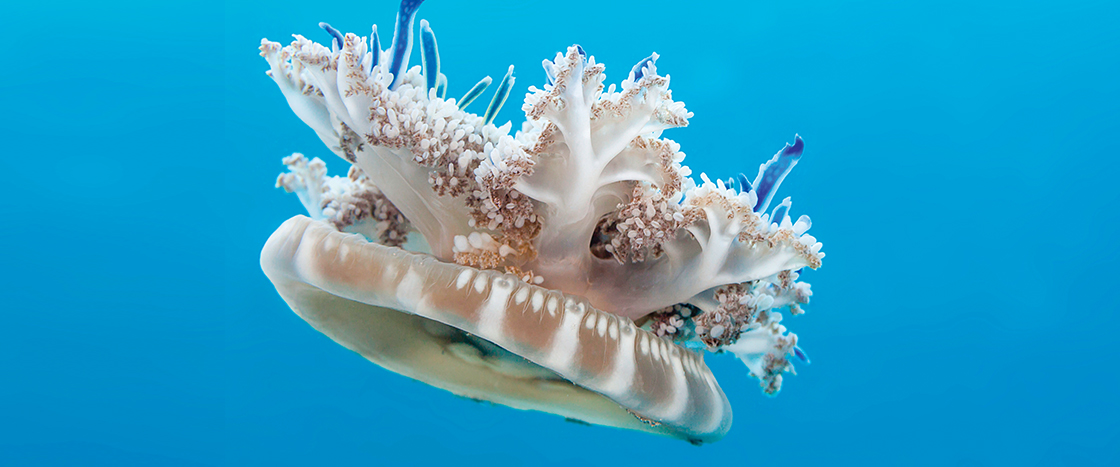Anna Klompen/University of Kansas and Cheryl Ames/Smithsonian Research Collaborator
A close-up view of the jelly’s stinging mucus
Most jellyfish sting when fish or other prey touch their tentacles. But this jelly, called the upside-down jellyfish, stings its victims even when they’re far away. How? It shoots out a stinging, sticky mucus. Scientists recently learned more about how the goo works.
Using microscopes, the scientists discovered that the mucus contains tiny popcorn-shaped structures. These structures, which scientists have named cassiosomes, hold toxic venom. When the mucus traps small shrimp, the cassiosomes inject the venom to paralyze them. The venom can’t paralyze humans. But if swimmers touch the goo, they feel a burning sensation.
Next, scientists want to study what triggers the release of the mucus. “There are tons of questions still to be answered,” says biologist Anna Klompen.

